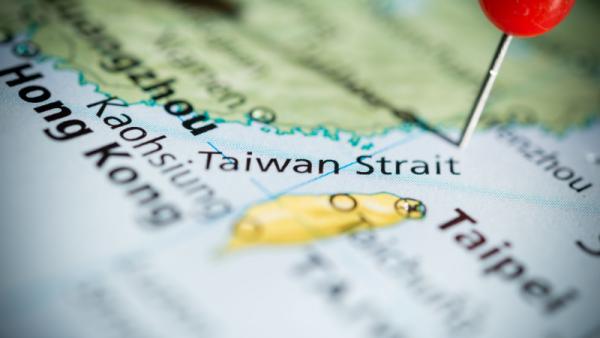Tudoran Andrei / Shutterstock

James Laurenceson, Director, Australia-China Relations Institute, University of Technology Sydney |
This article appeared in The Canberra Times on September 24 2022.
The first four months of the Albanese government haven't been short on diplomatic achievements.
But one is particularly impressive and yet easy to miss: the restoration of strategic space to respond to developments in the Taiwan Strait.
In 2018, Australian National University professor of strategic studies Brendan Taylor identified the Taiwan Strait as one of the region's ‘four flashpoints’. This year he assessed it had become the ‘most dangerous’ one.
Last November, then-defence minister, Peter Dutton jettisoned the decades-long diplomatic wisdom of refusing to engage in hypotheticals.
Without reference to the circumstances that might lead to a prime minister needing to decide whether to back America in a fight against China, Dutton asserted that, ‘It would be inconceivable that we wouldn't support the US in an action if the US chose to take that action’.
In contrast, the new government immediately reverted to the tried and tested formula. Events since election day have amply demonstrated the value of doing so.
In striking comments this week, US President Joe Biden said that, ‘Taiwan makes their own judgments about their independence’, and while he was not necessarily encouraging it, ‘that's their decision’.
A Taiwanese declaration of independence would be the surest trigger for a Chinese invasion.
Seventy-seven percent of experts polled by the Washington-based Centre for Strategic and International Studies take this view.
This made the next comment by Biden just as striking: a promise that US forces would defend the island if China attacked.
Washington and Canberra have traditionally been aligned in a position that supports peace and prosperity by discouraging both Beijing and Taipei from changing the status quo. Like Australia, the US accepted that there is only is ‘one China’, and further, was ambiguous about whether US forces would intervene in the event of hostilities.
Former President George W. Bush explicitly ‘opposed’ Taiwanese independence.
But Washington has now shifted, opening a gap with Canberra and taking a position that is contrary to Australia's interests. In June, Defence Minister Richard Marles emphasised that unless an agreement were struck by consensus between Beijing and Taipei, ‘We do not support Taiwanese independence’.
Last month's visit to Taiwan by US House of Representatives Speaker, Nancy Pelosi provided another illustration of Canberra reverting to deft diplomacy.
As the person second in line to the presidency, Pelosi's visit was unprecedented and, in Beijing's view, broke an earlier promise by Washington to only conduct ‘unofficial relations with the people of Taiwan’.
Foreign Minister Penny Wong's immediate response to call for ‘all parties’ to de-escalate tensions. And rather than leap to offer full-throated support for the visit, she stated that ‘the level of US engagement with their Taiwanese counterparts is a matter for them’. Meanwhile, Australia was focused on ‘discouraging unilateral changes in the status quo’.
The next day Wong repeated the call for ‘all parties’ to de-escalate. The New York Times judged her language newsworthy, presumably because rather than being one-sided, it ‘appeared to signal that China and the United States should calm things down’.
It was only after Beijing began military exercises that included firing missiles over Taiwan that Wong issued a statement describing such actions as ‘disproportionate and destabilising’. She subsequently signed on to a joint statement with her US and Japanese counterparts condemning the missile launches and urging China to cease the exercises.
While the stand-alone one only drew a muted response from the Chinese embassy, the joint statement led to a spokesperson alleging that in singling China out for criticism but not the US, ‘the Australian side has condemned the victim along with the perpetrators’.
This stronger language was hardly surprising given that Washington has declared Beijing to be a strategic competitor and historical grievances stemming from Tokyo forcing China's imperial Qing dynasty government to cede Taiwan in 1895, and colonising it until 1945.
Nonetheless, my own conversations with Chinese diplomats have indicated an awareness of the timeline and that the Australian government's responses were calibrated to Beijing's actions, not Washington's preferences.
Given what is potentially coming down the pike, Canberra has good reason to maintain the space it has carved out.
Last week, the US Senate foreign relations committee cleared a bill that would require Taiwan be treated ‘as though it were designated a major non-NATO ally’ - a status bestowed on Australia, Japan, Korea and Israel. Recall that this is an island less than 200 kilometres off the Chinese mainland that Beijing regards as its sovereign territory.
Even more alarmingly, during a visit to Australia last month, former Trump national security adviser, John Bolton said that even if the former president himself didn't make a comeback, it was ‘a near certainty’ that the 2024 Republication presidential nominee would move to recognise Taiwan as an independent country.
At that point, the gap between Canberra and Washington would be chasm. Australia remains committed to a one China policy that, ‘does not recognise the ROC [Taiwan, the Republic of China] as a sovereign state and does not regard the authorities in Taiwan as having the status of a national government’.
Australia has a role to play in supporting Taiwan's freedoms. But it can't only be about deterring Chinese coercion. Reassuring Beijing that its worst fears will not come to pass must also be part of the mix. If Washington chooses to ignore that and poke the bear, at least now Canberra is better placed to decline to spill Australian blood and treasure in the tragic events that might follow.
Author
Professor James Laurenceson is Director of the Australia-China Relations Institute at the University of Technology Sydney.


